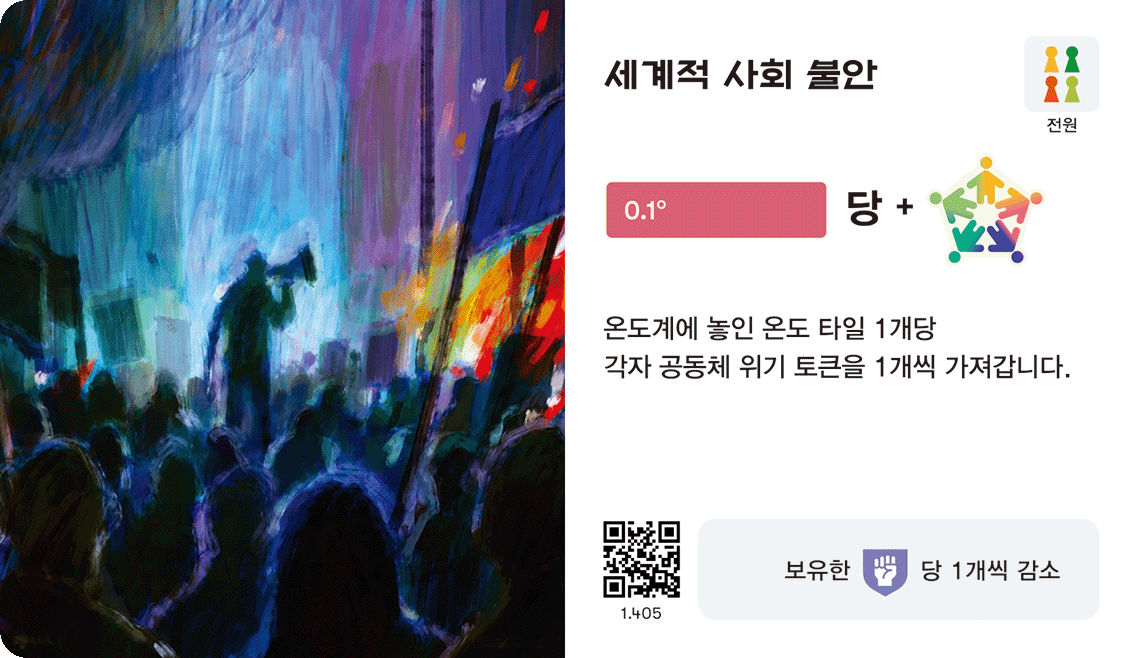세계적 사회 불안
위기
기온 상승과 생태계 파괴는 사회적 불안과 갈등을 유발할 수 있습니다. 이러한 현상이 발생하는 방식은 복잡합니다. 예를 들어, 심각한 가뭄이 폭동의 직접적인 원인은 아닐 수 있습니다. 그러나 물 부족은 농작물 피해를 초래하고, 이는 농부들에게 재정적 손실을 주며, 모든 사람에게 식량 가격 상승과 식량 부족을 야기할 수 있습니다. 이러한 영향은 빈곤, 정치적 불만, 물, 식량 및 기타 주요 자원에 대한 경쟁과 같은 기존 문제들과 상호 작용을 할 가능성이 높습니다. 이 모든 문제가 결합되면 감당하기 어려운 상황이 될 수 있습니다.
이 때문에 기후 위기는 ‘위기 증폭기(crisis multiplier)’로 묘사됩니다. 이는 가장 취약한 사람들을 더욱 취약하게 만듭니다. 약 35억 명의 사람들이 아프리카, 남아시아, 남아메리카와 중미, 그리고 소규모 섬나라와 같은 다수세계의 고위험 지역에 거주하고 있습니다.
정부가 지역 사회에 기본적인 생활필수품을 제공하지 못할 경우, 기온 상승과 함께 사회적 불안과 갈등이 발생할 가능성이 높아집니다. 이러한 지역 사회가 가속화되는 기후 충격에 더 잘 대처할 수 있도록 돕기 위한 투자가 필요합니다. 교육, 의료 서비스 개선, 충분한 영양 공급, 경제적 기회 제공, 민주적 참여와 같은 사회적 투자는 사회적 불안을 초래하는 압력을 완화하는 데 도움을 줄 수 있습니다.
온도계에 놓인 온도 타일 1개당 각자 공동체 위기 토큰을 1개씩 가져갑니다.
보유한 사회 복원력 토큰 1개당 이 효과를 1개씩 감소시킬 수 있습니다.
예를 들어: 온도 타일 5개 - 사회 복원력 토큰 3개 = 공동체 위기 토큰 2개 추가.
복원력 토큰은 버려지지 않습니다.
